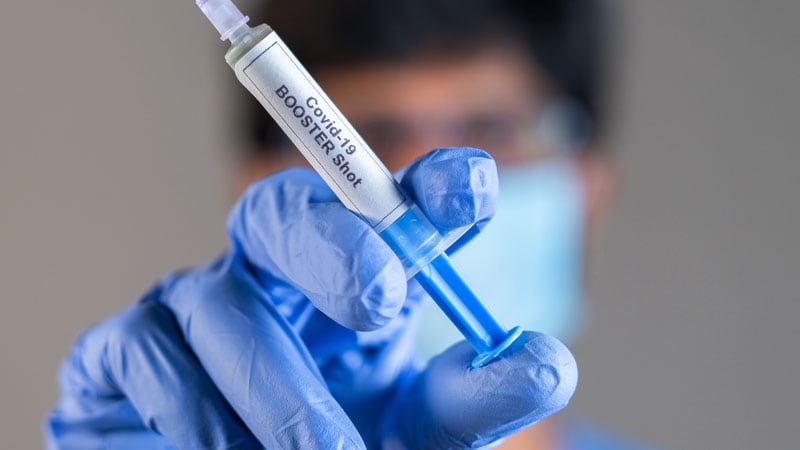The FDA on Tuesday approved a second bivalent COVID-19 booster for Americans at higher risk, in the hopes of increasing the public’s protection and encouraging more people to get the vaccine, which targets both the original strain of the SARS-CoV-2 virus and two Omicron variants.
The Moderna and Pfizer-BioNTech monovalent (single-strain) mRNA COVID vaccines will no longer be available, as the agency withdrew emergency use authorizations for both.
The FDA recommended an additional bivalent booster for:
-
People age 65 or older who have received one bivalent dose, as long as it is 4 months after that initial shot
-
Most unvaccinated people, who may now receive a single dose of the bivalent vaccine, rather than multiple doses of the original monovalent mRNA vaccines
-
Most people who have received a monovalent shot
-
People who are immunocompromised and have received one bivalent shot. Another booster can be given 2 months later, and more doses may be given at the discretion of, and at times determined by, their health care provider. For immunocompromised people ages 6 months to 4 years, eligibility will depend on the vaccine they got before.
-
Children 6 months through 5 years of age who have been vaccinated, but the number of boosters they receive depends on previous vaccines given
The FDA said that unvaccinated children 6 months to 5 years of age can receive a two-dose series of the Moderna bivalent vaccine; or they can get a three-dose series of the Pfizer-BioNTech bivalent vaccine (through age 4). Unvaccinated children who are 5 years old can get two Moderna bivalent boosters or a single Pfizer booster.
Decision Was Expected
The backing of a second booster was expected, especially since the CDC’s Advisory Committee on Immunization Practices (ACIP) meets Wednesday to formally recommend who should get the bivalent booster.
In February, the panel recommended against another booster, saying the nation should move instead toward an annual shot in the fall. At the same time, the CDC published data showing that having an updated booster reduced the risk of death.
The CDC reports that only 17% of Americans have had a bivalent booster; only 43% of those over age 65 have received the two-strain shot. Meanwhile, there are about 100,000 COVID cases and more than 1,300 deaths in the U.S. each week, according to the agency. While most of those deaths are in people over 65, the FDA is still urging people to get a booster.
“Americans under 65 have not taken advantage of getting a bivalent booster to a large extent,” Peter Marks, MD, PhD, director of the FDA’s Center for Biologics Evaluation and Research, said in a briefing with reporters. He estimated that 75% of people between the ages of 12 and 65 “could be getting a bivalent booster at this point and have not taken one.”
Those people “could go out and get the bivalent booster now to improve their protection,” he said.
People under 65 who have already received a single bivalent dose should not yet get another one, said the agency.
Simplifying the Process
The agency said it wants to simplify the COVID vaccination schedule to stop confusion and better prepare for emerging variants. To that end, the FDA’s advisory panel will meet in June to discuss what strains and variants of SARS-CoV-2 are most likely to be circulating in the fall and winter of 2023-24.
The committee will recommend which of those should be included in a vaccine, and drugmakers will then prepare the new shot to be given in the fall, Marks said.
It is similar to the process the FDA and drugmakers use to determine the makeup of the influenza vaccine each year, he said.
Just as with the flu vaccine, the agency and health officials will urge people to get the newest shots. “As we move into future seasons, particularly if the strain composition of the vaccine has to be updated, it may be important for all individuals to get an updated vaccine in order to provide protection against future variants that come along,” Marks said.
The FDA judged how safe a solo bivalent vaccine would be, based on previous data from various age groups that received the Moderna and Pfizer monovalent and bivalent vaccines.
“We’re comfortable making some extrapolations here, based on our understanding of these vaccines, given the hundreds of millions of doses given and from what we’ve seen with real-world evidence both with the monovalent and the bivalent vaccines,” Marks said.
Neither the Moderna nor the Pfizer monovalent or bivalent vaccines have been formally approved, but they have emergency use authorization. But Marks said the FDA still wants to put the products through the longer full approval process.
“We know that people feel more comfortable overall with licensed products,” he said. But “we stand behind their safety, effectiveness, and quality just the same way as we do licensed products.”
Sources:
FDA: “Coronavirus (COVID-19) Update: FDA Authorizes Changes to Simplify Use of Bivalent mRNA COVID-19 Vaccines.”
CDC: “Advisory Committee on Immunization Practices (ACIP),” “COVID-19 Incidence and Mortality Among Unvaccinated and Vaccinated Persons Aged ≥12 Years by Receipt of Bivalent Booster Doses and Time Since Vaccination – 24 U.S. Jurisdictions, October 3, 2021-December 24, 2022,” “COVID-19 Vaccinations in the United States,” “COVID Data Tracker.”
Peter Marks, MD, PhD, director, FDA Center for Biologics Evaluation and Research.
Source: Read Full Article
